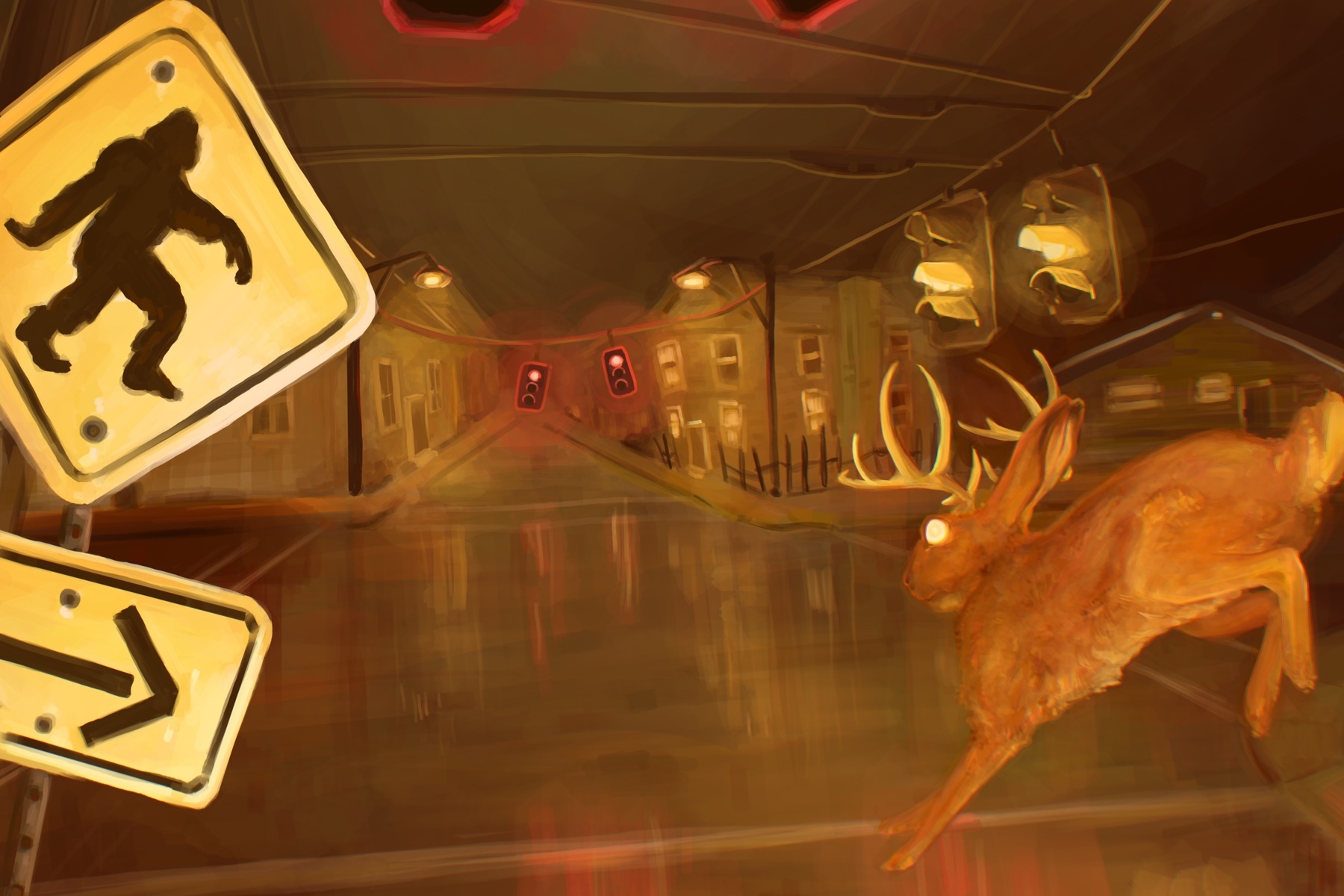Humanity has told stories of strange creatures for a very long time. In ancient Greece, there were tales of monsters like the Chimera, a hybrid beast that combines the upper half of a lion, a goat’s head and a snake for a tail. More recently, the Jersey Devil is said to be a beast with cloven hooves, bat-like wings and horns. It shares the cobbled-together animal traits of the Chimera, but it isn’t exactly a mythical creature. The Jersey Devil is an example of a cryptid, a term coined in 1983 that refers to animals that are reportedly seen but haven’t been proven to exist.
Other cryptids include the Mothman, the Chupacabra and the Mongolian Death Worm. Most cryptid sightings are merely anecdotal, but there are a few that have been famously captured on film. Bigfoot was supposedly recorded in the Patterson-Gimlin film, while the Loch Ness Monster was spotted in the 1934 surgeon’s photograph. These findings have pervaded pop culture and people’s imaginations. They have even led to the creation of the pseudoscience of cryptozoology.
Cryptids fall into the category of unexplained phenomena, which also include things such as ghosts, aliens and UFOs. From a group of 2,000 American adults, 63% said they believed in the paranormal in some form. 39% believed that aliens had visited Earth, and 27% believed in Bigfoot. Bigfoot is probably the most well-known cryptid; everyone from Buzzfeed Unsolved to the History Channel has searched for him, none of which found any substantial evidence.
While strange creatures fascinate society and become ingrained in pop culture, they are unlikely to exist. Creatures like the Mothman, the Jersey Devil, and the Loch Ness Monster have left no trace of evidence outside of a few stories. The Patterson-Gimlin film was highly scrutinized, regardless of Gimlin’s insistence that the footage was real. Dr. Robert Wilson, the man who staged and took the surgeon’s photograph, came out stating that the lake monster was all a hoax. He created the Nessie model using a toy submarine. Even if Dr. Wilson never came clean, the existence of Nessie is highly unlikely for a number of reasons, primarily because a cold-blooded reptile would not be able to survive in the frigid waters of Loch Ness.
Given that the famous documentation of cryptids has been outright disproven, and scientists state that cryptids cannot biologically exist, why do many people still believe in them? Why do these creatures remain ingrained in popular culture?
One large reason is money. People are attracted to places where strange things are said to have occurred, which is why haunted houses are often tourist attractions. According to Forbes, the United States rakes in about $140 million annually from crypto tourism. Scotland earns a little over $73 million a year from Nessie tourism. Any money is good money, so with this financial incentive, people are driven to tell tales. Ape-like creatures, lake monsters, haunted houses and alien crash sites all grab people’s attention — and their money. Maintaining a local legend provides a high reward and little, if any, risk.
While money is a big factor, culture and folklore are just as important. Point Pleasant is associated with the Mothman before anything else, and Roswell is in a similar situation with its supposed UFO crash site. The city of Roswell has an International UFO Museum and Point Pleasant holds an annual Mothman Festival. Many other towns in the States have their own local cryptids, including the Bishopville Lizard Man, the Braxton County Monster and the Beast of Boggy Creek.
These strange creatures are celebrated with festivals that bring tourists to their towns. Crypto tourism, a Smithsonian article points out, resembles a pilgrimage. Just as miracles once drew pilgrims to certain places, strange paranormal sightings draw curious tourists. Cryptids also bring attention back to small towns and forgotten-about areas.
In a way, cryptids are a celebration of specific areas; one wouldn’t find the Mothman in a Southern California suburb or Nessie in the Great Lakes. It is hard to imagine Roswell without alien-themed motels, diners and museums. It is also hard to imagine Point Pleasant without its famous silver Mothman statue, which was erected in the early 2000s.
Belief in cryptids may also stem from a craving for mystery. Advancements in technology have rapidly increased: Satellites show us nearly every corner of the globe and everyone carries a device in their pocket that can access any piece of information everywhere. Cryptids like Bigfoot, Nessie and the Jersey Devil are fun to speculate about and believe in because they restore some strangeness to a known world.
In addition, there are quite a few real animals that are very odd. The platypus, which resembles a mixture of a duck and a beaver, was thought to be a hoax by Europeans in the 18th century. The kangaroo was a similar story: Amerigo Vespucci described it as a mixture of a monkey, a fox and a man. Giant squids, too, were quite an enigma: They live deep in the ocean, are seldomly spotted and may have been the inspiration for the Kraken. The first time a giant squid was photographed was in 2004. Those who legitimately believe in cryptids reason that, if giant squids were only recently proven to exist, why couldn’t Bigfoot be next?
Ultimately, cryptids are part of a tradition of telling stories about monsters that do not exist in nature. They continue to have a place in popular culture and belief systems for a few reasons. The financial incentive encourages people to tell tales of their cryptids because it drums up interest and brings in tourist money. Having a local legend also gives towns and cities a kind of uniqueness that can’t be found anywhere else. The concept of cryptids and other odd phenomena also restores mystery. In a way, Nessie, Bigfoot and the Mothman are like Santa Claus for adults; they bring back wonder and strangeness to a well-documented world.










